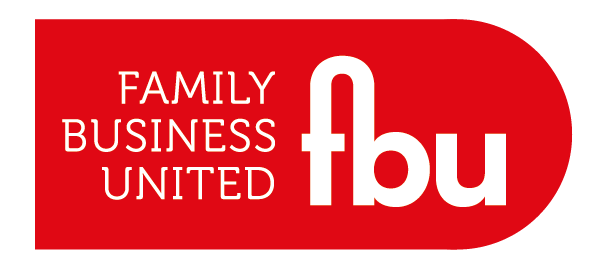The Enduring Power Of Family Businesses Around The World
- Paul Andrews - Founder & CEO, Family Business United

- Sep 19
- 4 min read

From the corner bakery in Naples to the sprawling industrial conglomerates of South Korea, family businesses form the quiet backbone of the global economy. Often overlooked in favour of flashy start-ups or publicly traded giants, these enduring enterprises have demonstrated that tradition, trust, and long-term vision can be as powerful as innovation and disruption.
A Global Economic Force
Family businesses represent more than just sentimental institutions built on generations of hard work; they are a global economic force. According to the Family Firm Institute, they account for approximately 70–90% of global GDP and employ over half the world's workforce. In Europe alone, around 60% of all private-sector companies are family-run. In emerging economies such as India, Brazil, and Nigeria, the figure soars even higher.
Their reach is extensive, cutting across virtually every sector — from agribusiness and retail to pharmaceuticals and high-tech manufacturing. They may differ in size and scope, but family businesses share a common thread: a deep-rooted commitment to legacy and longevity.
Building Legacies, Not Just Profits
One of the most cited strengths of family-owned firms is their long-term orientation. Unlike public companies driven by quarterly earnings reports and shareholder pressures, family businesses often plan in decades, not years. This has profound implications for strategy, risk tolerance, and sustainability.
Take Grupo Bimbo, the Mexican baking empire founded in 1945. Still run by the Servitje family, the company has grown into the largest baking company in the world, operating in over 30 countries. Its long-term investment in environmentally responsible production and employee welfare goes far beyond short-term profitability.
Or consider Hermès, the French luxury house still majority-owned by the Hermès family after nearly two centuries. Known for its resistance to overproduction and refusal to compromise on craftsmanship, Hermès exemplifies how a family-run ethos can underpin quality and prestige.
Innovation Through Tradition
Contrary to the stereotype of family firms as conservative or resistant to change, many have embraced innovation — albeit on their own terms, in many cases a necessity to ensure relevance in the modern world. The German Mittelstand, a network of small and medium-sized family enterprises, has become a poster child for precision engineering and niche innovation. Their secret? Combining traditional know-how with relentless reinvestment in R&D, all while staying independent and often privately held.
In Asia, South Korea’s chaebols — large, family-controlled industrial conglomerates — such as Samsung and Hyundai, have driven the country’s rapid economic development. While these entities have sparked debate over governance and succession, their influence on global markets is undeniable.
Notable Family Businesses Around the World
Tata Group (India) – Founded in 1868, this conglomerate spans steel, automotive, IT, and hospitality. Still controlled by the Tata family through trusts.
Cargill (USA) – The largest privately held company in the U.S., owned by the Cargill and MacMillan families.
IKEA (Sweden) – Founded by Ingvar Kamprad in 1943; the company is still family-influenced through complex ownership structures.
Ferragamo (Italy) – Luxury fashion house managed by the Ferragamo family, known for preserving artisanal craftsmanship.
Ayala Corporation (Philippines) – A diversified business group that has evolved over 190 years, still guided by the Zobel de Ayala family.
Challenges of Succession and Governance
Despite their strengths, family businesses are not without their vulnerabilities. The transition from one generation to the next is often fraught with emotional and operational challenges. Statistics paint a sobering picture with only a small proportion of family firms making it to the fourth generation or beyond.
Disputes over leadership, lack of succession planning, and family infighting can unravel decades of progress.
To combat these risks, many family firms are professionalising management, bringing in external CEOs, and establishing clearer governance structures. Others are setting up family councils and charters to formalise roles and preserve values.
Culture, Community, and Continuity
Perhaps the most underappreciated contribution of family businesses lies in their social capital. These firms are often deeply embedded in their communities, acting not just as employers, but as cultural stewards and philanthropic leaders. In Italy, small family-run wineries are preserving ancient viticultural traditions. In Africa, family-owned agricultural cooperatives are empowering women and supporting local education initiatives.
The resilience of family businesses was particularly evident during the COVID-19 pandemic. Many of them pivoted quickly, prioritised employee well-being, and weathered the storm with fewer layoffs than their corporate counterparts.
The Road Ahead
As the world faces seismic challenges — climate change, technological disruption, shifting demographics — family businesses are uniquely positioned to lead. Their commitment to stewardship, combined with an ability to take the long view, makes them vital actors in building a more inclusive and sustainable future.
Yet to fully realise their potential, they must navigate the delicate balance between heritage and transformation. Embracing diversity, digitalisation, and modern governance while retaining core values will be key.
In the end, the story of family businesses is not just about balance sheets — it’s about the people behind them. It’s about fathers and daughters, mothers and sons, siblings, cousins, and even adopted families who believe in something bigger than themselves.
In a world that often prioritises speed and scale, family businesses remind us of the quiet strength in building slowly, staying rooted, and passing something enduring on to the next generation.








%20copy%20(4)%20copy%20(1)%20copy%20copy%20(1)%20copy%20(1)-Medium-Quality.jpg)



.png)
























